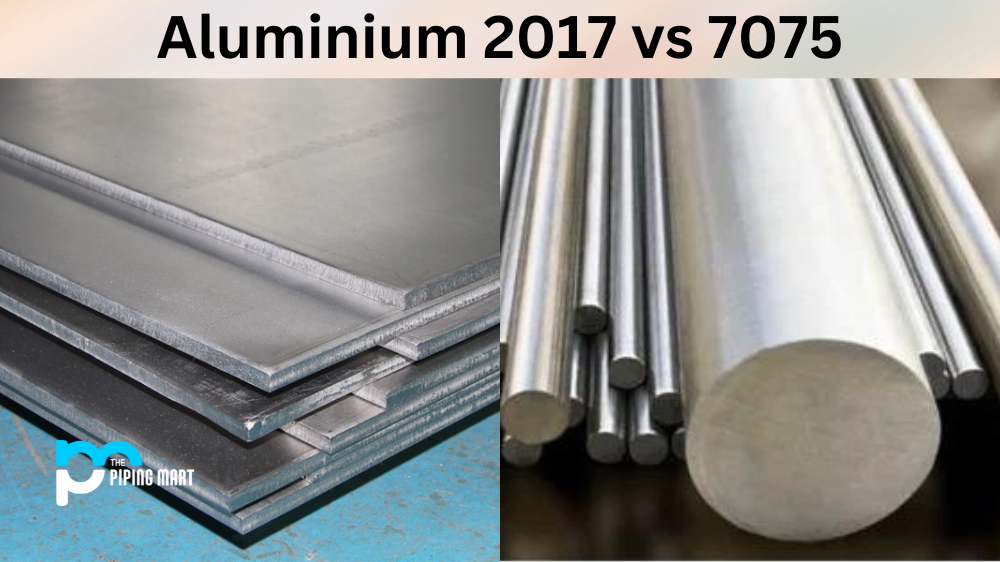Aluminium is one of the most popular metals used in the manufacturing industry. It is widely used in various applications such as aerospace, automotive industry, marine, construction, packaging, etc. It is a versatile metal that offers excellent strength-to-weight ratio, resistance to corrosion, and high thermal conductivity. In this blog post, we will compare two of the most commonly used aluminium alloys — Aluminium 2017 and 7075. By the end of this post, you’ll have a clear idea of which alloy is best suited for your specific application.
What is Aluminium 2017?
Aluminium 2017 is copper-alloyed aluminium that is heat-treatable and offers excellent machinability. It is often used in aerospace applications as it has high tensile strength and good fatigue resistance. It is also used in various fields, such as sports equipment, the automotive industry, and military applications. The 2017 alloy offers good forming characteristics and has high thermal conductivity. However, it has poor corrosion resistance and should not be used in environments exposed to acids or harsh chemicals.
What is Aluminium 7075?
Aluminium 7075 is often called aircraft-grade aluminium as it is widely used in the aerospace industry. It is a high-strength alloy with good mechanical properties and excellent resistance to stress corrosion cracking. It also has good machinability, making it a popular choice for intricate parts and components. However, it has poor wear resistance and is susceptible to corrosion when exposed to alkaline solutions.
Difference Between Aluminium 2017 and 7075
Although the 2017 and 7075 alloys are frequently used in aerospace applications, they differ significantly in their strength, machinability, and corrosion resistance. The 7075 alloy is stronger than the 2017 alloy, making it the better choice for applications that require high strength. However, the 2017 alloy has superior machinability, making it easier to work with during manufacturing. In terms of corrosion resistance, the 7075 alloy is better than the 2017 alloy, although it is still susceptible to certain types of corrosion.
Composition:
The main difference between aluminium 2017 and 7075 is their composition. Aluminium 2017 contains copper and magnesium, while aluminium 7075 contains zinc and copper. This difference in composition gives each alloy different properties.
Strength:
Aluminium 2017 is strong but not as strong as aluminium 7075. Aluminium 7075 is the stronger of the two alloys due to the presence of zinc in its composition. This makes it more suitable for applications where high strength is required such as in the manufacture of aircraft.
Corrosion Resistance:
Both aluminium alloys have good corrosion resistance but aluminium 7075 is more resistant than aluminium 2017 due to the presence of zinc in its composition.
Conclusion
In conclusion, Aluminium 2017 and 7075 alloys are excellent metals for manufacturing various products. However, the choice between the two depends on the application’s specific requirements. If your product requires high strength and good corrosion resistance, then the Aluminium 7075 alloy is the best choice. On the other hand, if your product requires superior machinability and good thermal conductivity, then the Aluminium 2017 is the better option. It is important to consider all the factors and consult with an expert before making a final decision.

Pipingmart is a B2B portal that specializes in metal, industrial and piping items. Additionally, we share the latest information and information about materials, products and various types of grades to assist businesses that are involved in this business.




